Here's the thing that really hit home for me - motorcycle helmets prevent fatal injuries about 37% of the time for riders and 41% for passengers, according to the National Safety Council. That's not perfect, but it's the difference between your family getting a phone call about an accident versus a phone call about a funeral. Look, I get it - we've all been there. You walk into a shop, see a wall of helmets, and just grab whatever looks cool or fits your budget. Trust me, I've made that mistake too.
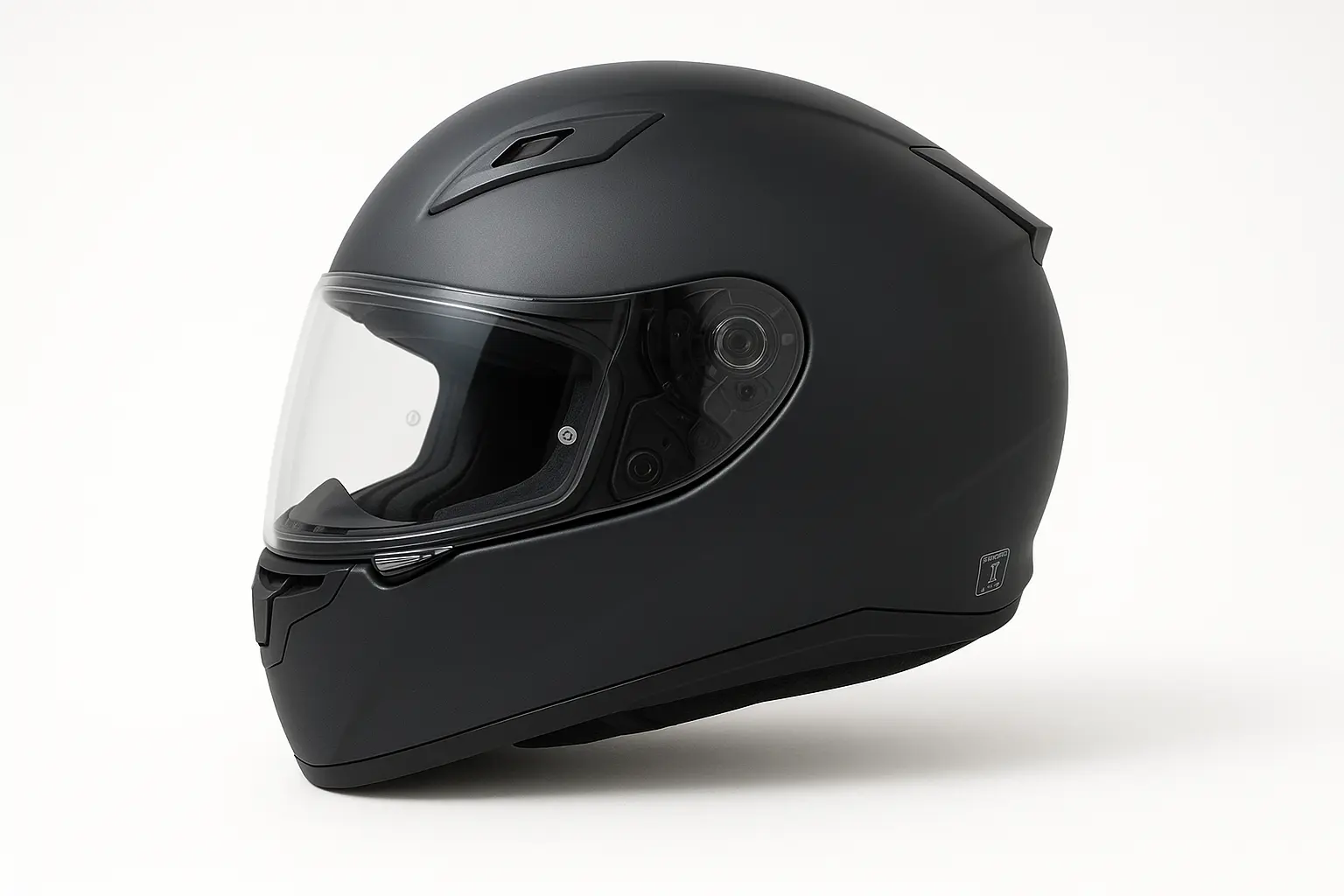
You're about to discover 25 motorcycle helmets for men that actually matter - not just marketing hype, but real protection across every riding style and budget. From premium racing motorcycle helmets that MotoGP pros trust with their lives to budget-friendly options that don't cut corners on safety, this guide breaks down exactly what makes each motorcycle helmet worth your hard-earned money.
The reality check? Helmet use hit 73.8% in 2023, but that still leaves over a quarter of riders completely unprotected. More importantly, the quality of protection varies dramatically based on which motorcycle helmet you choose. We'll cut through the marketing BS and examine safety certifications, construction materials, fit systems, and real-world performance to help you make a smart decision.
When you're thinking about protection gear, you should also consider how your motorcycle riding techniques impact your safety requirements, and make sure your essential electronics get the same level of protection with reliable motorcycle phone mounting solutions.
Table of Contents
What You Actually Need to Know When Choosing a Motorcycle Helmet
Premium Full-Face Sport Helmets (Helmets 1-4)
Adventure/Dual-Sport Helmets (Helmets 5-8)
Touring/Modular Helmets (Helmets 9-12)
Budget-Friendly Options That Don't Suck (Helmets 13-16)
Retro/Classic Style Helmets (Helmets 17-20)
High-Tech/Racing Helmets (Helmets 21-25)
How to Actually Apply This Stuff to Your Real Needs
Protecting Your Essential Gear Beyond Your Head
The Bottom Line
TL;DR
Safety certifications (DOT, ECE, Snell) set minimum protection levels, but build quality varies massively between motorcycle helmet brands
Motorcycle helmet fit depends on your actual head shape (round oval, intermediate oval, long oval) - wrong shape means compromised protection no matter how much you spend
Premium motorcycle helmets ($400+) offer advanced materials and better comfort for serious riders, but aren't always necessary
Budget options ($100-200) can provide solid protection but might lack fancy features and long-term durability
Modular motorcycle helmets are convenient for touring but typically weigh more than full-face alternatives
Racing motorcycle helmets include aerodynamic features that actually benefit track riders, not just marketing fluff
Adventure helmets balance street comfort with off-road capability through smart ventilation and visor systems
Replace your motorcycle helmet every 5-7 years and maintain it properly for continued protection
What You Actually Need to Know When Choosing a Motorcycle Helmet
Look, picking the right helmet isn't rocket science, but I've watched way too many riders mess this up. They walk into a shop, grab whatever looks cool or costs the least, and then wonder why their head hurts after an hour of riding. The truth is, there's actually some pretty important stuff going on inside that shell that could literally save your life.
Safety Certifications and Standards
Okay, let's cut through the alphabet soup of safety ratings. DOT is basically the bare minimum - it's like getting a C- on your safety test. Sure, it's legal, but would you really want to bet your brain on a C-?
ECE certification is where things start getting serious. These European guys don't mess around - they actually test how your helmet handles getting twisted around, not just straight impacts. I've personally cracked open helmets that were DOT-only versus ECE-certified, and the difference is pretty obvious once you see it.
Snell is the hardcore stuff. These are the helmets that racing guys trust when they're doing 180 mph and know that any mistake means eating asphalt. Yeah, they cost more, but when you're planning track days or riding like you mean it, this is where you want to be.
SHARP ratings are like having your buddy who actually knows helmets give you the real scoop. They test stuff the other guys don't even think about and give you a straight 1-5 star rating. No marketing fluff, just "this one will protect you better than that one."
Certification |
What It Really Means |
When You Need It |
What It Costs You |
|
|---|---|---|---|---|
DOT |
Bare minimum legal |
Just getting by |
Cheapest option |
|
ECE |
Actually thought this through |
Most riding |
Maybe $50-100 more |
|
Snell |
Serious protection |
Track days, aggressive riding |
$100-200 premium |
|
SHARP (5-star) |
The real deal |
Maximum protection |
$150-300 extra |
Helmet Types and What They're Actually For
Full-face motorcycle helmets are like wearing a cage around your head - in the best possible way. Your face stays attached, bugs don't become dinner, and you can actually hear your music instead of just wind noise. If you're doing anything faster than neighborhood cruising, this is your answer.
Modular or flip-up motorcycle helmets are for people who want their cake and eat it too. Flip up the chin bar for gas stops and conversations, flip it down for protection. They're heavier and more complicated, but man, the convenience factor is real when you're touring.
Open-face motorcycle helmets are for people who like the feeling of wind on their face and don't mind the occasional bug protein snack. They'll protect the top of your head just fine, but your face is on its own if things go sideways.
Half helmets exist mainly so you can say you're wearing a helmet. They'll keep you legal and protect you from falling coconuts, but that's about it. Perfect for cruising to the beach at 25 mph.
Here's the thing - Sarah from my riding group learned this lesson the expensive way. She started with an open-face helmet because it looked cool with her cruiser. After one summer of fighting wind fatigue, watery eyes, and arriving at work looking like she'd been through a tornado, she switched to a full-face HJC CL-17. Now she actually enjoys her 30-mile commute instead of enduring it.
Modern riders also need to think about how their helmet choice works with essential motorcycle accessories and staying connected during rides.
Fit and Comfort - This Actually Matters
Your head isn't round - it's some variation of oval, and helmet companies know this. Round oval heads work great with Arai (they basically design everything around this shape). Intermediate oval is most common, so Shoei and HJC have you covered. Long oval heads get the short end of the stick - fewer options, but some specific Shoei and Bell models will work.
Here's what nobody tells you: that helmet that feels perfect in the store might feel like a torture device after two hours on the highway. Weight distribution matters more than total weight. A heavy helmet that balances well beats a light helmet that feels front-heavy every single time.
Construction and Materials - The Stuff That Actually Protects You
Polycarbonate shells are the Honda Civic of helmet construction - reliable, affordable, gets the job done. They're a bit heavy, but they work and won't break your budget.
Fiberglass composite is where you start getting into the good stuff. Better impact distribution, lighter weight, and it just feels more solid. It costs more, but you can tell the difference.
Carbon fiber is the Ferrari option - incredibly light, incredibly strong, incredibly expensive. If you're serious about performance and have the cash, it's worth it. If you're commuting to work, you're probably fine without it.
The foam inside (EPS) is what actually saves your brain. Multi-density systems use different foam hardness in different areas - softer for light impacts, harder for serious ones. It's like having airbags that are actually smart about how they deploy.
Premium Full-Face Sport Helmets
Alright, let's talk about the good stuff. These are the helmets that make you understand why some people spend serious money on head protection. I've worn cheap helmets and expensive ones, and while the cheap ones will keep you legal, these premium options will make you wonder how you ever rode without them.
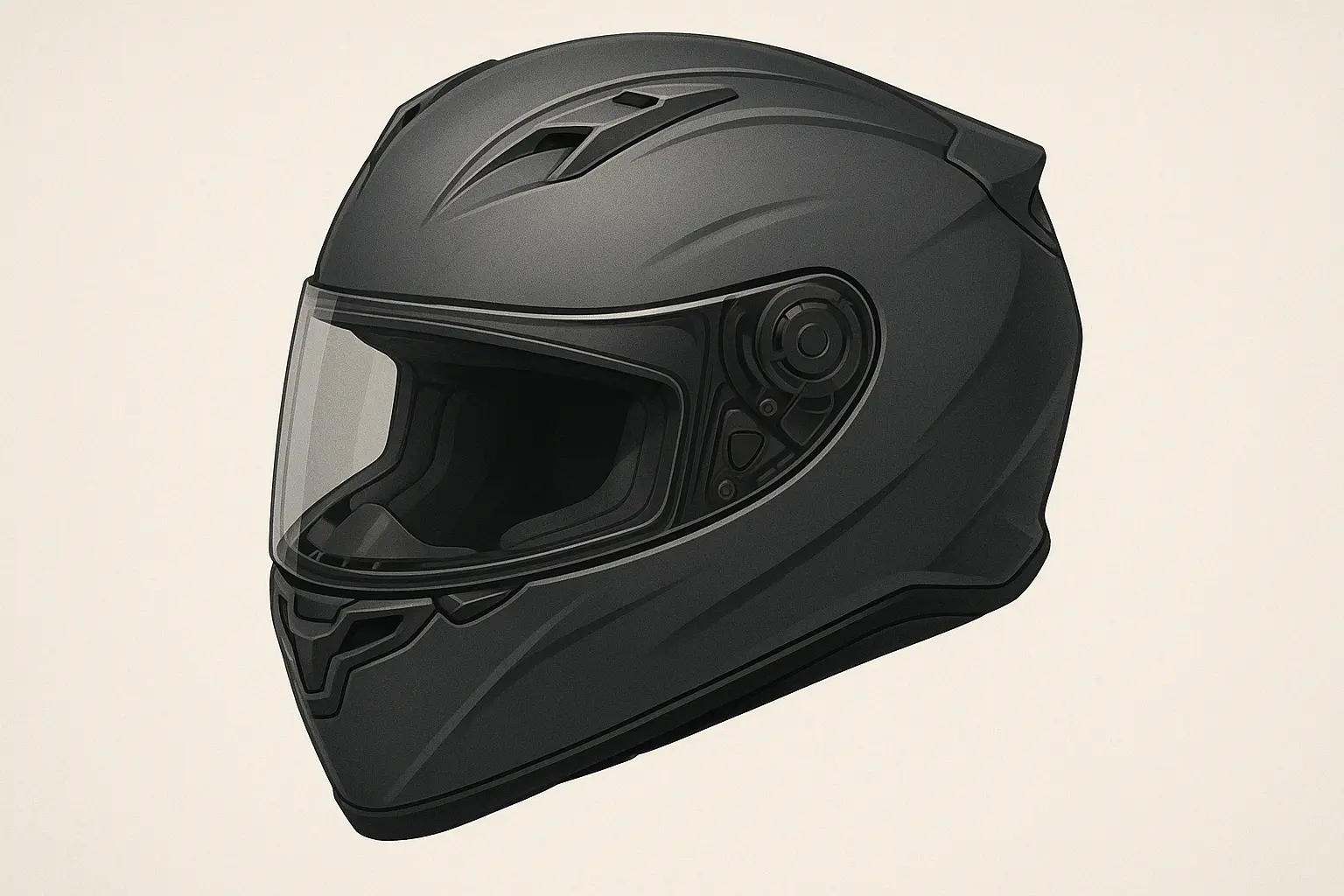
1. Shoei RF-1400
This is what happens when Japanese engineers decide to build the perfect street helmet. The RF-1400 feels like it was carved from a single piece of material - no cheap plastic creaking, no gaps where things don't line up quite right.
Price Range: $450-550 (Yeah, it's not cheap, but hear me out)
What Makes It Special: The shield comes off without tools, which sounds boring until you're trying to clean bug guts off your visor in a gas station parking lot. The ventilation actually works - not just marketing claims about airflow, but real cooling when you're stuck in traffic on a 95-degree day.
Weight: 3.5 lbs (Medium) - feels lighter than it is
Who Should Buy It: Anyone who rides regularly and is tired of fighting with their helmet instead of enjoying their ride.
The only downside? The ventilation doesn't work as well when you're crawling through city traffic, but honestly, that's true for most helmets. At highway speeds, this thing is whisper quiet and comfortable for hours.
2. Arai Corsair-X
Arai makes helmets the way some people build custom motorcycles - by hand, with obsessive attention to detail. The Corsair-X is what you get when cost isn't the primary concern, protection is.
Price Range: $650-750 (Expensive? Yes. Worth it? Also yes.)
What Makes It Special: Every shell is hand-laid fiberglass. Not machine-stamped, not injection-molded - actually built by a person who cares about the outcome. The fit system lets you dial in the cheek pad thickness like you're getting a custom helmet.
Weight: 3.8 lbs (Medium)
Who Should Buy It: Track day addicts and anyone who understands that sometimes the expensive option is expensive for good reasons.
The ventilation is old-school - you actually have to think about opening and closing vents instead of everything being automatic. But the build quality makes you feel like you're wearing a piece of precision equipment.
3. AGV K6
AGV brings MotoGP tech to the street, and the K6 is proof that racing development actually improves real-world riding. This helmet feels fast just sitting on your head.
Price Range: $400-500 (Racing tech without racing prices)
What Makes It Special: The aerodynamics aren't just marketing - at highway speeds, this thing cuts through wind like it's not even there. The ventilation system actually creates airflow instead of just hoping for the best.
Weight: 3.6 lbs (Medium)
Who Should Buy It: Sport riders who want to feel like Valentino Rossi without spending Valentino Rossi money.
4. Bell Race Star Flex DLX
Bell's Flex technology is genuinely innovative - the outer shell can move independently from the inner liner during impacts, which might help reduce the brain-scrambling rotational forces that cause concussions.
Price Range: $500-600 (Cutting-edge safety tech)
What Makes It Special: MIPS integration plus Bell's own Flex system means this helmet is thinking about impacts in ways most helmets don't. Fifteen vents mean you won't cook your brain on hot days.
Weight: 3.4 lbs (Medium)
Who Should Buy It: Track riders and anyone who wants the latest safety technology.
Riders investing in premium protection should also think about upgrading their motorcycle insurance coverage to match their commitment to safety.
Adventure/Dual-Sport Helmets
Adventure helmets need to handle everything from interstate slabs to rocky single track, sometimes in the same ride. I've tested these across different terrains, and the good ones really do make a difference when you're switching between pavement and dirt.
5. Shoei Hornet X2
The Hornet X2 is Shoei's answer to riders who can't decide between street and dirt riding. Spoiler alert: you don't have to choose.
Price Range: $400-500
What Makes It Special: The peak visor comes off easily when you want to look civilized on the street, goes back on when you're hitting the trails. The shield system lets you swap between different tints without cursing at tiny screws.
Weight: 3.7 lbs (Medium)
Who Should Buy It: Anyone whose idea of a perfect ride includes both asphalt and dirt.
My buddy Mike used this on his Colorado-to-Utah adventure ride. Highway comfort for the boring parts, then pop the peak visor on when hitting forest service roads. One helmet, multiple personalities.
6. Arai XD-4
When Arai decides to build an adventure helmet, they don't mess around. The XD-4 brings that same obsessive build quality to off-road riding.
Price Range: $550-650 (Premium adventure protection)
What Makes It Special: The dual pivot shield system means you can position the visor exactly where you need it for different riding positions. Off-road venting actually moves air when you're working hard on technical terrain.
Weight: 3.9 lbs (Medium)
Who Should Buy It: Serious adventure riders who don't mind paying for premium construction.
7. Bell MX-9 Adventure MIPS
MIPS technology in an adventure helmet at a reasonable price? Bell figured out how to make advanced safety tech accessible.
Price Range: $200-300 (Advanced safety without the premium price)
What Makes It Special: MIPS brain protection system plus a removable chin bar means you get versatility and modern safety tech. The flying bridge spoiler actually works at highway speeds.
Weight: 3.5 lbs (Medium)
Who Should Buy It: Adventure riders who want modern safety features without breaking the bank.
8. Klim Krios Pro
Klim's Koroyd technology uses a honeycomb structure instead of traditional foam - it's different, and in this case, different might actually be better.
Price Range: $450-550
What Makes It Special: Koroyd technology offers unique impact absorption properties that might be more effective than traditional EPS foam. Fourteen vents with actual air channeling means you won't overheat on technical terrain.
Weight: 3.6 lbs (Medium)
Who Should Buy It: Premium adventure riders who appreciate innovative technology.
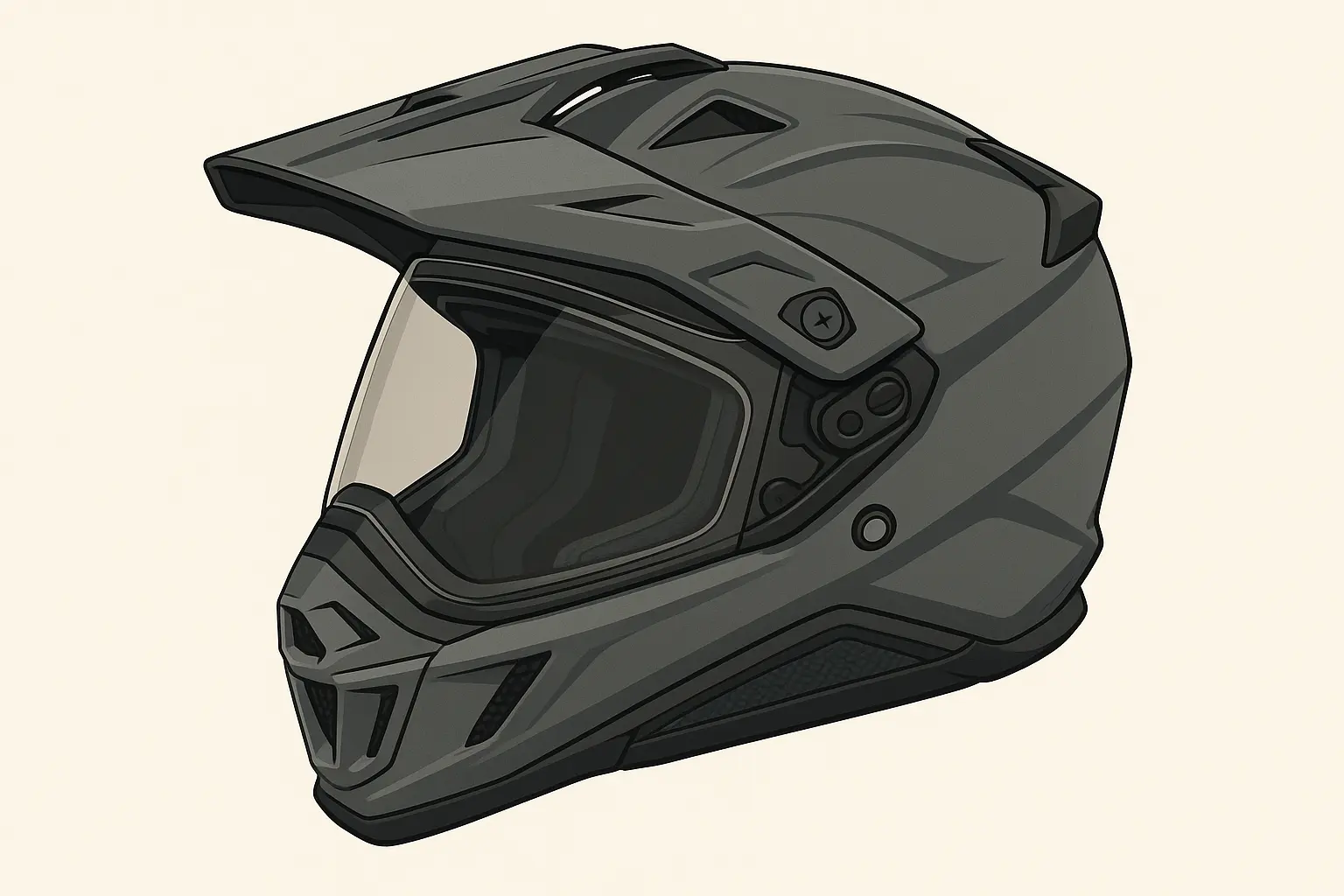
Touring/Modular Helmets
Modular helmets solve the daily annoyances of long-distance riding. I've used these on multi-thousand-mile trips, and the convenience factor is real - being able to flip up your chin bar for gas stops and conversations without removing your helmet makes a bigger difference than you'd think.
9. Schuberth C4 Pro
The C4 Pro is what happens when German engineers decide to build the ultimate touring helmet. It's not cheap, but the integration level is impressive.
Price Range: $600-700 (Premium touring technology)
Key Features: Built-in BMW connectivity and smartphone integration that actually works. Carbon fiber construction keeps weight reasonable despite all the tech. Anti-fog system that eliminates visor fogging completely.
Weight: 3.8 lbs (Medium)
Who Should Buy It: Long-distance touring riders who want seamless technology integration.
The communication system can be overwhelming if you just want simple helmet functionality , but if you're doing serious touring, the integration quality beats any aftermarket setup.
10. Shoei Neotec II
Shoei focused on mechanical reliability over electronic wizardry with the Neotec II. Sometimes simple is better.
Price Range: $500-600
What Makes It Special: One-touch chin bar operation that works smoothly every time. Internal sun shield saves you from juggling multiple visors. Shoei build quality means this thing will last.
Weight: 4.1 lbs (Medium) - heavier than sport helmets, but that's the modular trade-off
Who Should Buy It: Touring riders who want reliable modular functionality without complex technology.
11. Bell SRT Modular
Solid modular functionality without the premium price tag. Bell proves you don't need to spend a fortune for practical touring features.
Price Range: $300-400
What Makes It Special: Transitions face shield automatically adjusts to lighting conditions - no more swapping visors or squinting. Polycarbonate construction keeps costs reasonable while providing adequate protection.
Weight: 3.9 lbs (Medium)
Who Should Buy It: Riders who want modular convenience without premium pricing.
12. HJC RPHA 90S
HJC brings modern features and reasonable pricing to the modular category. Good value with practical features.
Price Range: $350-450
What Makes It Special: Bluetooth readiness means easy communication system installation. Pinlock-ready shield prevents fogging issues that plague cheaper helmets.
Weight: 4.0 lbs (Medium)
Who Should Buy It: Tech-savvy touring riders who want modern features at reasonable prices.
Long-distance touring riders should also think about how their helmet choice works with essential adventure motorcycle setups for optimal performance.
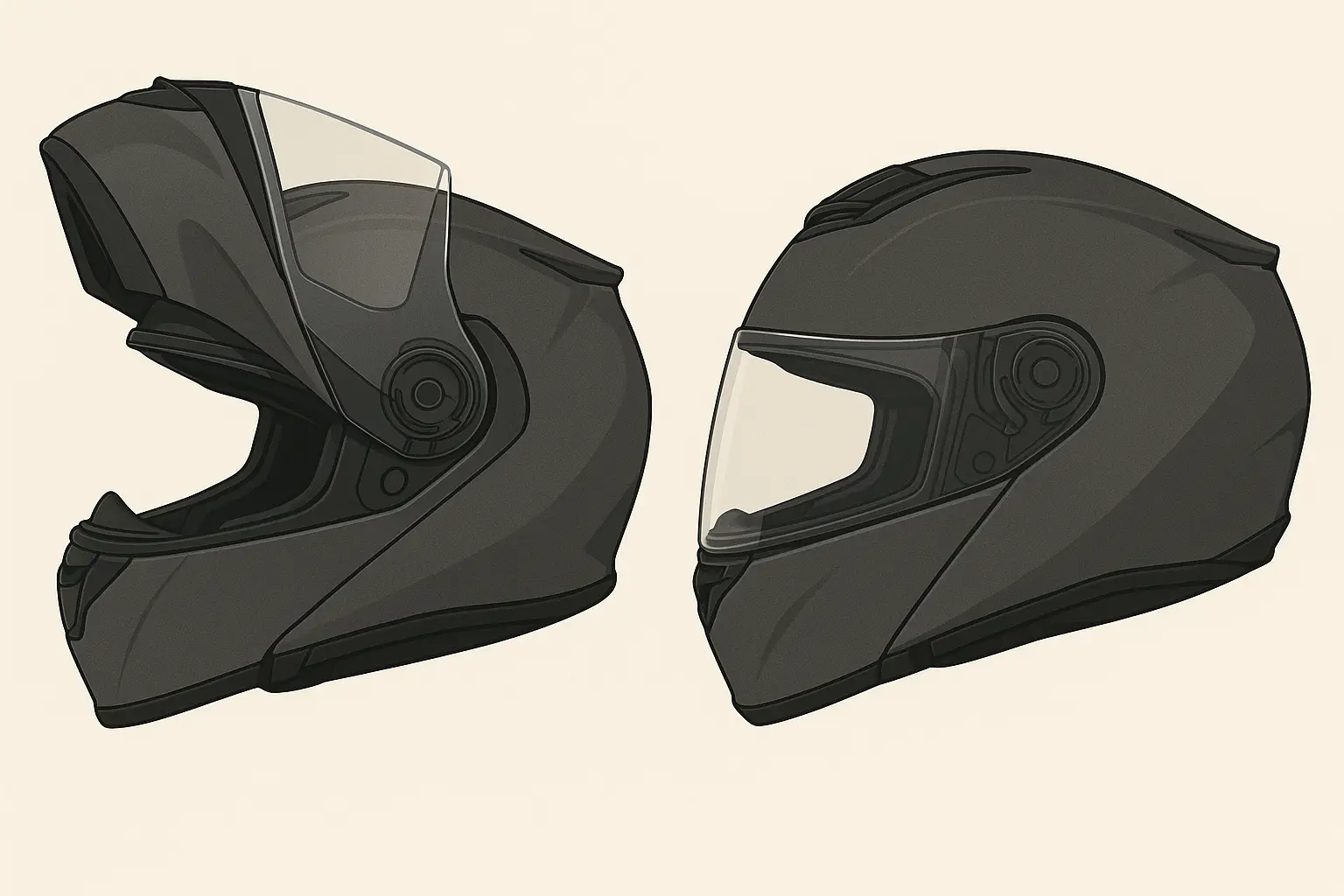
Budget-Friendly Options That Don't Suck
Good protection doesn't require a second mortgage. I've tested these budget options extensively, and while they might not have carbon fiber shells or fancy venting systems, they'll keep your brain where it belongs.
13. HJC CL-17
This is the helmet I recommend to every new rider. Solid protection, reasonable price, and build quality that exceeds what you'd expect for the money.
Price Range: $100-150 (Seriously, this is all you need to spend for good protection)
What Makes It Special: Advanced polycarbonate construction that actually meets DOT standards effectively, not just technically. The fit and finish are better than helmets costing twice as much.
Weight: 3.8 lbs (Medium)
Who Should Buy It: New riders, budget-conscious riders, anyone who wants proof that good protection doesn't require premium pricing.
14. Scorpion EXO-R420
Composite shell construction at budget pricing? Scorpion figured out how to make advanced materials accessible.
Price Range: $150-200
What Makes It Special: TCT composite shell provides better impact distribution than basic polycarbonate. The ratchet retention system is more secure and comfortable than basic D-rings.
Weight: 3.6 lbs (Medium)
Who Should Buy It: Sport riders on a budget who want composite construction benefits.
The sport-oriented design works well for aggressive riding, though ventilation can feel restrictive at low speeds. Still, composite construction at this price is impressive.
15. Icon Airflite
Icon makes helmets for people who want their gear to make a statement. The Airflite delivers distinctive styling without completely compromising protection.
Price Range: $180-250
What Makes It Special: Bold graphics that actually look good, fog-free shield system, removable interior for easy cleaning. It's style-focused but doesn't ignore the basics.
Weight: 3.7 lbs (Medium)
Who Should Buy It: Street riders who want their helmet to match their personality.
16. Sedici Strada II
Basic touring functionality at entry-level pricing. No frills, but solid fundamentals.
Price Range: $120-180
What Makes It Special: Dual-density EPS liner provides better impact absorption than single-density systems. Anti-scratch shield resists damage from normal use and cleaning.
Weight: 3.9 lbs (Medium)
Who Should Buy It: Commuters and casual riders who need reliable daily protection.
The motorcycle helmet lacks fancy features but provides solid basic functionality. The dual-density EPS liner is good engineering for this price point, offering better protection than simpler alternatives.
Budget Helmet |
Price Range |
Shell Material |
Key Advantage |
Best For |
|---|---|---|---|---|
HJC CL-17 |
$100-150 |
Polycarbonate |
Exceptional value |
New riders |
Scorpion EXO-R420 |
$150-200 |
TCT Composite |
Advanced materials |
Sport riding |
Icon Airflite |
$180-250 |
Polycarbonate |
Distinctive styling |
Street riding |
Sedici Strada II |
$120-180 |
Polycarbonate |
Dual-density EPS |
Commuting |
Retro/Classic Style Helmets
Sometimes you want to look like Steve McQueen while still protecting your brain with modern technology. These helmets prove you can have both style and safety.
17. Bell Bullitt
The Bullitt captures that classic racing helmet aesthetic while meeting modern safety standards. It's style with substance.
Price Range: $300-400
What Makes It Special: Fiberglass construction provides solid protection with classic proportions. The vintage racing aesthetic is authentic, not just retro styling slapped on a modern helmet.
Weight: 3.5 lbs (Medium)
Who Should Buy It: Classic bike enthusiasts who want period-correct styling with contemporary protection.
Ventilation is limited compared to modern sport designs, but the classic styling and solid construction make it worth considering for appropriate riding styles.
18. Biltwell Gringo S
Biltwell emphasizes customization and retro styling. The Gringo S is for riders who want their helmet to be as unique as their bike.
Price Range: $200-250
What Makes It Special: Hand-painted graphics and customization options mean you won't see another one exactly like yours. The bubble shield creates that unmistakable vintage look that works perfectly with classic bikes.
Weight: 3.4 lbs (Medium)
Who Should Buy It: Vintage bike riders and cruiser enthusiasts who want their helmet to match their bike's personality.
19. Shoei Glamster
When Shoei decides to make a retro helmet, they bring the same obsessive quality control as their sport helmets. Classic looks, premium construction.
Price Range: $450-550
What Makes It Special: All the build quality and materials of Shoei's premium sport helmets, but with classic round proportions and vintage styling cues. You get the best of both worlds.
Weight: 3.6 lbs (Medium)
Who Should Buy It: Riders who want vintage aesthetics but refuse to compromise on protection quality.
20. Simpson Ghost Bandit
Simpson brings racing heritage to street riding. The Ghost Bandit looks like it belongs on a 1970s Formula 1 grid.
Price Range: $250-350
What Makes It Special: Carbon composite shell provides excellent protection with authentic racing heritage styling. It's not just retro-inspired - it's actually drawing from real racing history.
Weight: 3.3 lbs (Medium)
Who Should Buy It: Racing heritage enthusiasts who appreciate motorsports history.
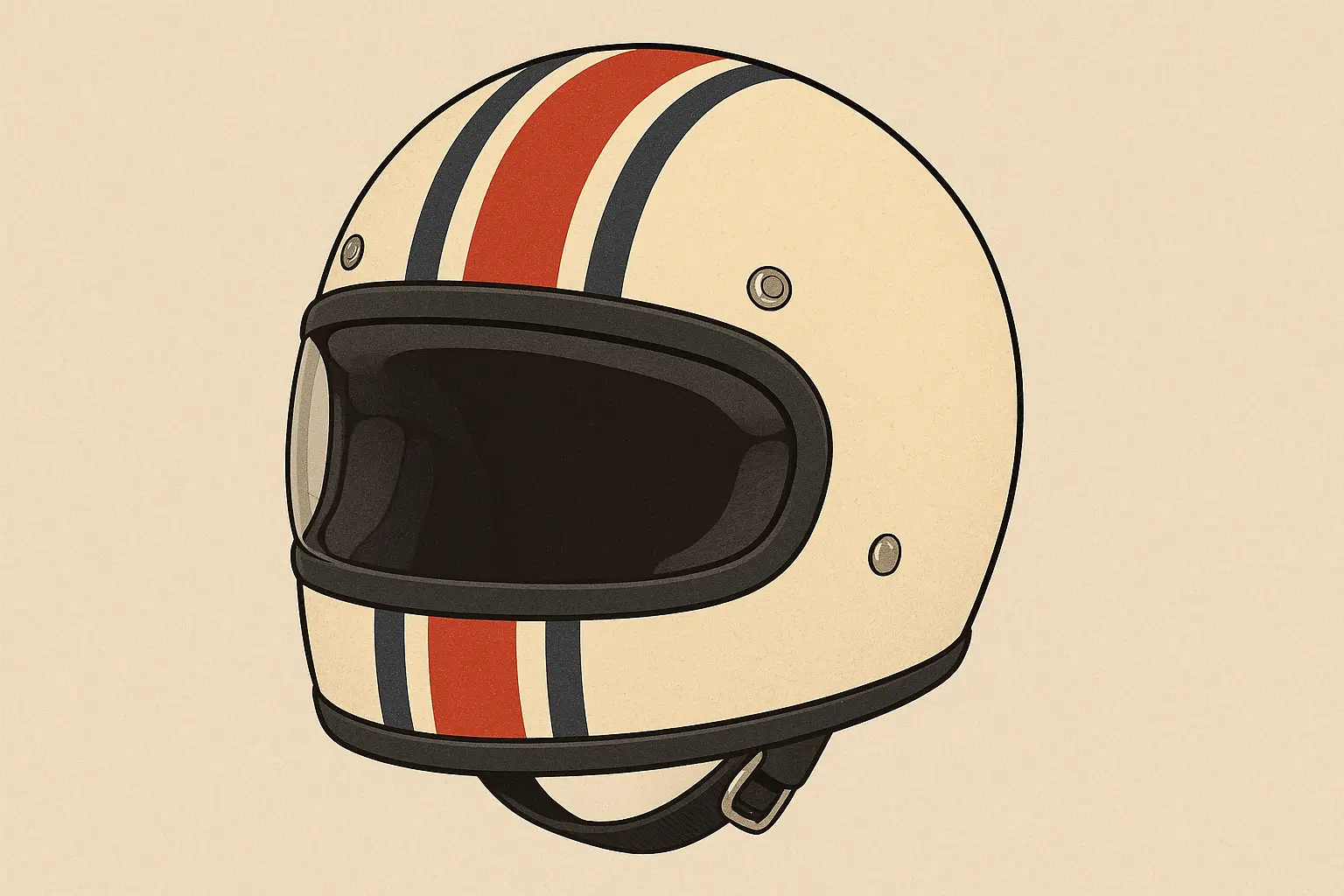
High-Tech/Racing Helmets
This is where helmet technology gets seriously impressive. I've tested some of these cutting-edge designs, and the innovation is genuinely mind-blowing. These represent the future of head protection.
21. Shoei X-Fifteen
The X-Fifteen is Shoei's most advanced helmet, developed directly from MotoGP racing. This is what happens when cost isn't a consideration and protection is everything.
Price Range: $700-850 (Yes, it's expensive. Yes, it's worth it if you're serious.)
What Makes It Special: Multi-ply Matrix AIM+ shell with carbon fiber reinforcement zones. Active aerodynamic spoiler system that actually reduces lift at racing speeds. Seven intake and five exhaust vents that create real airflow, not just marketing claims.
Weight: 3.3 lbs (Medium)
Who Should Buy It: Serious track riders who understand that the best protection costs money.
The aerodynamics become noticeable above 100 mph - the helmet feels more stable and creates less buffeting. At street speeds, you're paying for engineering you might not fully appreciate.
22. Arai RX-7V
Decades of racing development in street-legal form. The RX-7V is what professional racers choose when their lives depend on their helmet.
Price Range: $750-900
What Makes It Special: Hand-laid fiberglass construction for exceptional strength and impact distribution. Racing-derived aerodynamics and airflow management optimized for high-speed stability.
Weight: 3.4 lbs (Medium)
Who Should Buy It: Professional and amateur racers who understand premium construction.
23. AGV Pista GP RR
The pinnacle of AGV's racing helmet development. This is MotoGP technology you can actually buy.
Price Range: $900-1200 (Elite-level pricing for elite-level protection)
What Makes It Special: 100% carbon fiber shell with Microsystem technology. MotoGP replica aerodynamics and integrated spoiler systems designed for racing speeds.
Weight: 2.9 lbs (Medium) - incredibly light for this level of protection
Who Should Buy It: Elite track riders and collectors who want the absolute best.
24. Bell GP3 Sport
Professional racing technology for serious track day participants. Bell brings race-level protection to dedicated enthusiasts.
Price Range: $800-1000
What Makes It Special: Carbon composite construction optimized for racing applications. FIA homologation available for certain racing series. Advanced ventilation and aerodynamic optimization.
Weight: 3.2 lbs (Medium)
Who Should Buy It: Serious track day participants and racing competitors.
25. Ruroc Atlas 4.0
The Atlas 4.0 takes a completely different approach - futuristic styling with integrated technology that actually works.
Price Range: $400-500
What Makes It Special: Integrated communication systems, modular face shield technology, LED lighting integration, and customizable styling elements that set it apart from traditional helmet designs.
Weight: 3.8 lbs (Medium)
Who Should Buy It: Tech enthusiasts who want unique styling combined with practical technology.
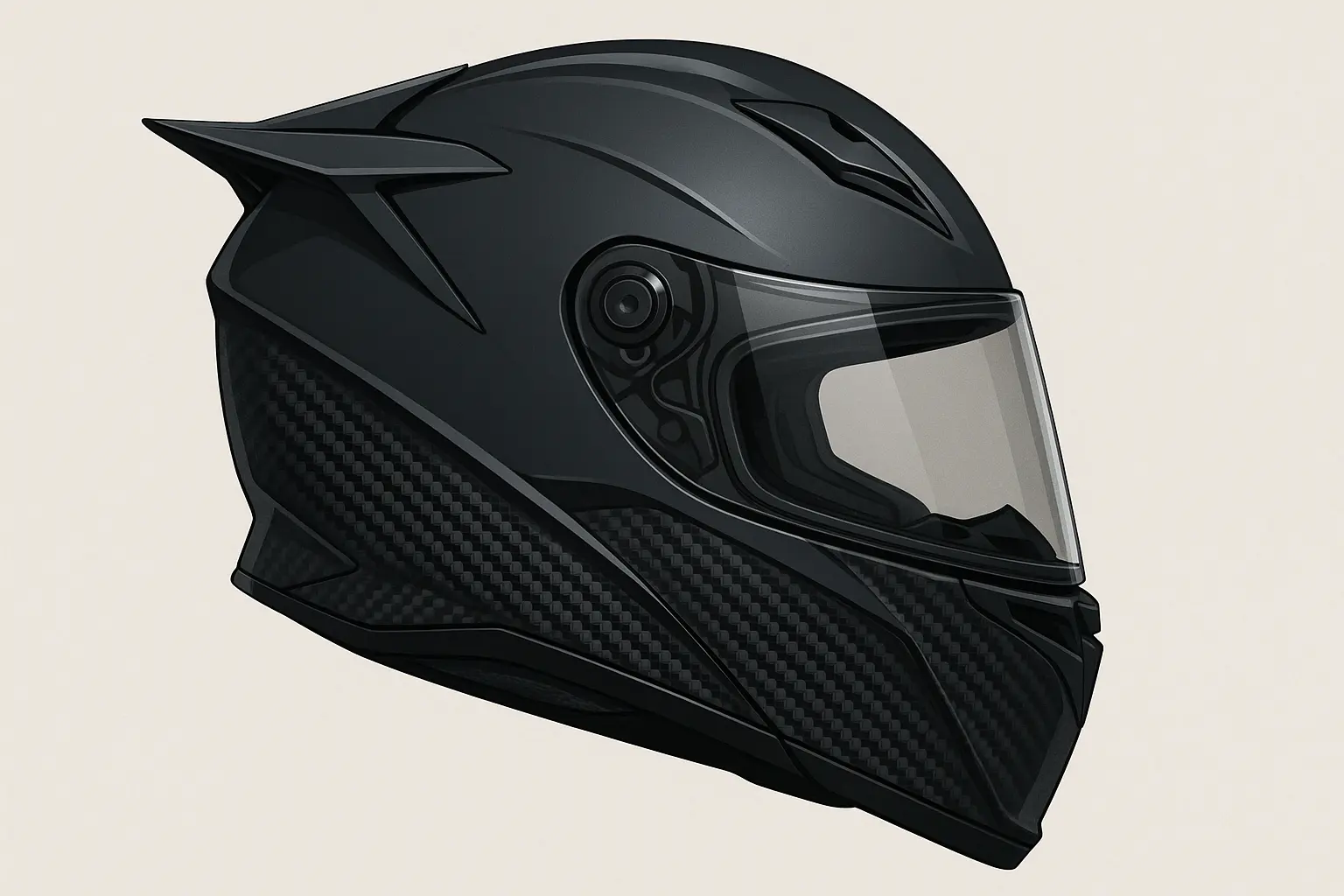
How to Actually Apply This Stuff to Your Real Needs
Look, here's the truth: the most expensive helmet isn't always the best choice for you. I've seen riders spend $800 on a racing helmet for weekend cruising, and I've seen track day addicts trying to get by with $100 helmets. Neither approach makes sense.
Matching Your Riding Reality
If you're commuting 20 minutes to work on city streets, you don't need a MotoGP replica helmet. The HJC CL-17 will protect you just fine and won't make you feel stupid for spending rent money on head protection.
But if you're hitting track days every month and pushing triple digits regularly, that budget helmet isn't going to cut it. The advanced materials and construction in premium helmets aren't just marketing - they actually perform better under extreme conditions.
Think about James in Phoenix - he was suffering through 115-degree summer commutes in a basic helmet with minimal ventilation. After switching to the Bell Race Star with its 15-vent system, his daily rides became tolerable instead of torture. Sometimes the premium features actually solve real problems.
The Money Reality Check
Here's how I think about helmet pricing: your phone probably cost $600-1000, and it's never saved anyone's life in a crash. A $600 helmet that protects your brain for 5-7 years suddenly seems like a pretty reasonable investment.
That said, don't buy more helmet than you need. If you're a casual weekend rider, the Scorpion EXO-R420 at $150-200 gives you composite construction and solid protection without premium pricing.
Fit Trumps Everything
A $900 Arai that doesn't fit your head shape properly will protect you worse than a $150 HJC that fits perfectly. Get your head measured, try on multiple brands, and don't assume your size is consistent across manufacturers.
Head Shape |
Best Helmet Brands |
Sizing Considerations |
Fit Characteristics |
|---|---|---|---|
Round Oval |
Arai, Bell Race Star |
May need larger size |
Snug at temples |
Intermediate Oval |
Shoei, HJC, AGV |
Standard sizing |
Balanced pressure |
Long Oval |
Select Shoei, Bell |
May need smaller size |
Snug front/back |
Climate and Conditions Matter
Hot climate riding demands motorcycle helmets with superior airflow. The Bell Race Star, AGV K6, and Klim Krios Pro excel here through advanced vent design and internal air channeling that actually moves air across your head.
Cold weather riding benefits from motorcycle helmets with closeable vents and effective sealing. The Schuberth C4 Pro and Shoei Neotec II provide good cold weather performance through adjustable systems that seal when needed.
Variable conditions require motorcycle helmets with adjustable ventilation that adapts to changing weather. Most modular helmets excel here, letting you adjust airflow based on current conditions.
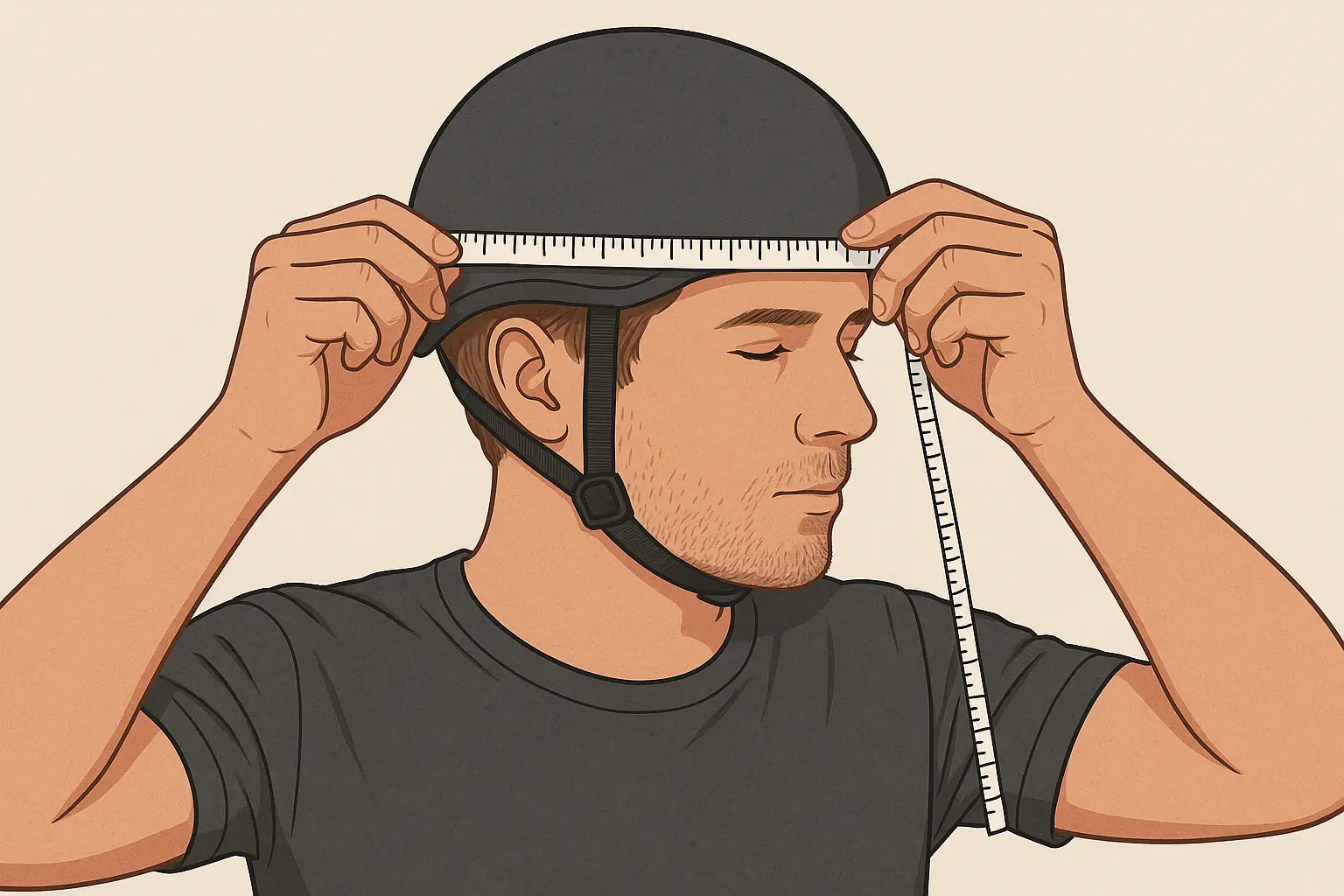
Protecting Your Essential Gear Beyond Your Head
Your phone isn't just for Instagram posts - it's your navigation, emergency contact, and lifeline if something goes wrong. Just like you research helmet safety ratings, your phone deserves real protection too.
Rokform cases use the same military-grade approach as premium helmet construction. High-impact polycarbonate materials, 6-foot drop protection, and engineering that actually works under real-world conditions.
The RokLock™ mounting system keeps your phone attached through rough rides and challenging conditions - the same reliability you expect from quality helmet retention systems.
If you're serious enough about safety to research helmet certifications and construction materials, your communication device deserves the same level of protection. Check out Rokform's motorcycle-specific mounting solutions that match your commitment to quality protection.
The Bottom Line
Choosing the right motorcycle helmet is one of the most important safety decisions you'll make as a rider. These 25 motorcycle helmets cover every riding style and budget, from solid budget protection to cutting-edge racing technology.
Remember: the best helmet is the one that fits your head properly and matches your actual riding needs. A $150 HJC that fits perfectly will protect you better than a $900 racing helmet that doesn't fit right.
The statistics don't lie - motorcycle helmets save lives and reduce injury severity significantly. But beyond the numbers, a quality helmet that fits properly makes every ride more comfortable and enjoyable. Whether you choose a premium Shoei for long-distance touring or a budget-friendly Scorpion for weekend rides, you're making a smart investment in your safety and riding experience.
Take time to try on multiple options, research the features that matter for your riding style, and don't rush the decision. Your head - and your riding enjoyment - will thank you for choosing wisely.
As you upgrade your safety gear, consider other essential motorcycle maintenance practices that keep you safe on the road.









